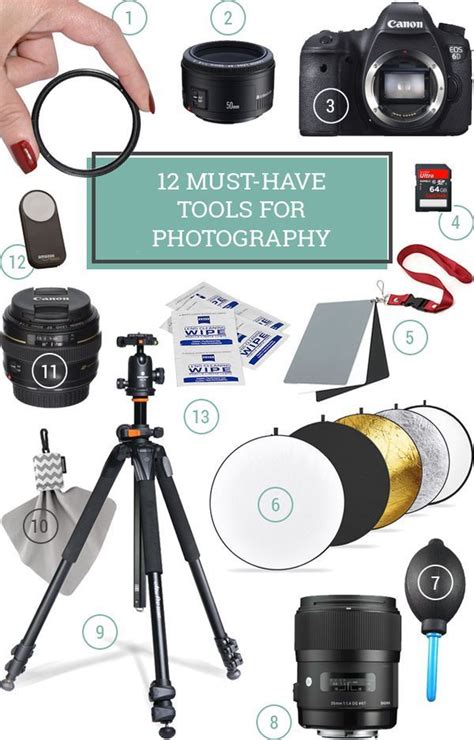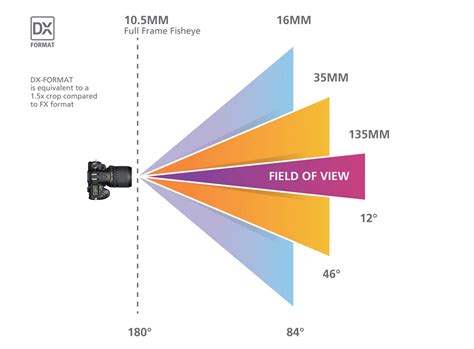Stepping into the fascinating realm of photography is akin to embarking on an exploration of boundless artistic expression. This enlightening journey opens up possibilities to transform mere moments into timeless visual narratives, forever capturing emotions, beauty, and stories that transcend time and space.
As you immerse yourself in this captivating universe, you'll soon discover that photography is far more than simply capturing images; it is a delicate balance between technical mastery and the eye of an artist. In order to embark on this magical adventure, it is crucial to equip yourself with a set of fundamental principles, techniques, and expert advice. This article aims to provide you with a valuable compass to navigate through the vast world of photography, offering insights and tips that will elevate your skills and ignite your passion.
By delving into the essentials of composition, lighting, and post-processing, you will gain a solid understanding of the building blocks that form the backbone of extraordinary photography. Furthermore, this guide will empower you to discover your unique style, enabling you to imbue every frame with your personal touch and creative vision.
Unlock the potential of your camera as you learn how to utilize its various settings and features to produce captivating images, breathing life into subjects, landscapes, and everyday objects. Immerse yourself in the art of storytelling through your lens, as you employ techniques such as depth of field, perspective, and framing to convey narratives and evoke emotional responses.
So, grab your camera, unleash your creativity, and embark on an adventure of self-expression, personal growth, and artistic exploration. With this beginner's guide, you will gain the confidence and knowledge necessary to capture moments that transcend time and leave an indelible imprint on the hearts and minds of your audience.
Mastering the Fundamentals: Indispensable Equipment for Photographers

In order to capture breathtaking images and create stunning photographic compositions, aspiring photographers must first understand the essential gear that they need to have in their arsenal. The right equipment not only enhances the quality of your photographs, but also allows you to explore and experiment with various techniques and styles. From cameras and lenses to tripods and filters, this section will guide you through the must-have tools that every photographer should invest in. Let's explore the key equipment that will take your photography skills to the next level.
1. Camera: A reliable camera forms the foundation of every photographer's toolkit. Whether you opt for a DSLR (Digital Single-Lens Reflex) camera or a mirrorless camera, it's essential to choose a model that suits your needs and budget. Consider factors such as image resolution, ISO range, autofocus capabilities, and shooting speed to find the perfect camera for your photography endeavors.
2. Lenses: Investing in high-quality lenses is crucial for achieving exceptional image quality and capturing various perspectives. Start with a versatile zoom lens for everyday photography, and gradually expand your lens collection to include prime lenses for portrait photography, wide-angle lenses for landscapes, and macro lenses for close-up shots. Each type of lens offers unique capabilities that allow you to explore different subjects and genres.
3. Tripod: A stable tripod is an indispensable tool for capturing sharp images with long exposures, shooting in low light conditions, and taking self-portraits. Look for a tripod that is sturdy, lightweight, and easy to set up. Additionally, consider features such as adjustable height, a smooth panning head, and a quick-release plate for added convenience.
4. Filters: Filters are versatile accessories that can dramatically enhance your photographs. Neutral density (ND) filters help control exposure in bright conditions, polarizing filters reduce glare and enhance color saturation, and graduated filters balance exposures in landscapes with a bright sky. Adding filters to your gear collection expands your creative possibilities and allows you to capture stunning images in various lighting conditions.
5. Memory Cards and External Storage: Don't forget the importance of ample storage space for your photographs. Invest in high-capacity memory cards with fast write speeds to ensure smooth shooting and quick data transfer. Additionally, consider backing up your images using external storage devices or cloud-based solutions to prevent loss of valuable data.
6. Camera Bag: Lastly, invest in a durable and well-padded camera bag to protect your equipment during transportation and storage. Look for a bag that offers ample space for your camera body, lenses, accessories, and other essentials. Consider features such as adjustable compartments, waterproof materials, and comfortable shoulder straps for added convenience and peace of mind.
By mastering the basics of essential photography gear, you set yourself up for success in your photographic journey. Remember to research and invest wisely in equipment that aligns with your interests and style of photography. Your gear choices will influence the type of images you capture and the creative possibilities you explore. Happy shooting!
Choosing the Right Camera: Finding Your Perfect Match
When it comes to photography, the importance of choosing the right camera cannot be overstated. Your camera serves as your partner in capturing moments, and finding the perfect match is essential in maximizing your potential as a photographer.
The camera you choose should align with your needs, preferences, and goals, allowing you to express your creativity and capture images that truly reflect your vision. With the myriad options available in the market, it's crucial to understand the factors that contribute to selecting the right camera for you.
A key consideration is determining the type of photography you wish to focus on. Whether you are interested in landscapes, portraits, wildlife, or street photography, each genre may require specific features and capabilities from your camera. Understanding your preferred niche will guide you in making an informed decision.
| Factor | Description |
|---|---|
| Image Quality | Choose a camera with a sensor size and resolution that meets your requirements for sharpness and detail in your photographs. Consider the available ISO range for low-light situations. |
| Camera Size and Weight | The portability of your camera is crucial, as it affects your ability to carry it comfortably during outdoor shoots. Consider the size and weight of different camera models. |
| Controls and Interface | Look for a camera that has an intuitive interface and controls that you find comfortable to use. Consider the placement of buttons, dials, and touchscreens. |
| Price Range | Set a budget and consider cameras within your price range. Remember to consider additional costs for lenses, accessories, and potential upgrades in the future. |
Additionally, researching and reading reviews about different camera models can provide valuable insights from other photographers who have hands-on experience with the cameras you are considering. This can help you gain a better understanding of the performance, reliability, and overall user satisfaction of each option.
Ultimately, choosing the right camera is a personal decision that is unique to each photographer. By considering your photography goals, desired features, and budget alongside the experiences and opinions of others, you can narrow down your options and find the camera that will be your perfect match.
Journey into the World of Lenses: Exploring Different Focal Lengths

Embark on an exciting expedition through the fascinating realm of lenses, where every focal length holds unique possibilities and creative potential. Discover the transformative power of narrowing down or widening your perspective, as you navigate the diverse landscapes that different focal lengths can capture.
As you embark on your lens journey, you'll encounter varying focal lengths that range from wide-angle to telephoto. Wide-angle lenses, with their shorter focal lengths, encompass a broad field of view, allowing you to capture expansive landscapes, architecture, and group shots with incredible depth and detail. On the other hand, telephoto lenses, with their longer focal lengths, bring distant subjects closer, resulting in stunning portraits, wildlife shots, and sports photography. The versatility of zoom lenses further enhances your ability to explore different focal lengths, as they allow you to adjust the focal length within a given range.
- Now, let's delve deeper into the specifics of different focal lengths:
- Wide-angle lenses (10mm-35mm): These lenses are ideal for capturing breathtaking landscapes, large group photos, and architectural marvels. They provide a wide perspective, emphasizing the foreground and creating a sense of depth.
- Standard lenses (40mm-60mm): These lenses closely resemble the way we naturally perceive the world. They are excellent for capturing everyday scenes, street photography, and portraits with a natural look.
- Telephoto lenses (70mm-200mm+): These lenses allow you to zoom in and bring distant subjects closer. They are perfect for capturing wildlife, sports action, and achieving a beautiful background blur, also known as bokeh.
It's important to note that the choice of focal length greatly impacts the composition, storytelling, and overall aesthetic of your photographs. Experimenting with different focal lengths will enable you to expand your creative horizons and capture images that convey the desired emotions and narratives.
So, strap on your lens explorer hat, and let the journey into the world of lenses ignite your passion for photography as you uncover the boundless opportunities that different focal lengths present.
The Art of Composition: Creating Breathtaking Visuals
In the world of photography, capturing stunning visuals is a skill that goes beyond technical expertise. It involves the art of composition, which is the deliberate arrangement of elements within a frame to create a visually appealing image. Through thoughtful planning and a keen eye, photographers can transform ordinary scenes into captivating works of art.
- 1. Understanding the Rule of Thirds: The rule of thirds is a fundamental principle in composition that involves dividing an image into nine equal parts using two horizontal and two vertical lines. By placing key elements along these lines or at their intersections, photographers can create a visually balanced and engaging composition.
- 2. Leading Lines: Incorporating leading lines into your composition can guide the viewer's eye through the image and create a sense of depth and movement. These lines can be anything from roads and fences to rivers and architectural structures. By strategically positioning these lines, photographers can add a sense of dynamism and interest to their photographs.
- 3. Framing: Framing refers to using elements within the scene to create a frame around the subject. This technique helps draw attention to the main subject and adds depth to the image. It can be achieved by using natural elements such as trees or arches, or even man-made structures like windows or doorways.
- 4. Symmetry and Reflections: Symmetry and reflections can create visually striking compositions. By capturing reflections in water, glass, or other reflective surfaces, photographers can add an element of intrigue and symmetry to their images. This technique works particularly well in architectural and landscape photography.
- 5. Negative Space: Negative space refers to the empty or unoccupied areas surrounding the main subject. By incorporating sufficient negative space, photographers can create a sense of simplicity, minimalism, and emphasize the subject's importance. This technique can be particularly effective in portrait and still life photography.
By understanding and applying these composition techniques, photographers can elevate their images from mere snapshots to captivating visual storytelling. Experimenting with different approaches and embracing creativity will allow photographers to develop their own unique style and leave a lasting impression on viewers.
Mastering the Art of Illumination: Unleashing the Potential of Light

In the realm of photography, understanding the nuances of lighting is paramount to capturing captivating images and telling powerful visual stories. Through a diligent exploration of various lighting techniques, photographers can harness the immense power of light to create evocative and stunning compositions. In this section, we will delve into the world of lighting techniques and equip beginner photographers with the knowledge needed to effectively manipulate light based on the desired mood, subject, and visual impact.
FAQ
What are some basic photography tips for beginners?
For beginners, it's important to focus on composition, lighting, and understanding your camera settings. Experiment with different angles, use the rule of thirds, and pay attention to the background. Also, learn about aperture, shutter speed, and ISO to have control over exposure.
How can I take better portraits?
To capture better portraits, firstly, establish a connection with your subject. Use natural light or experiment with artificial lighting. Pay attention to the background, choose the appropriate focal length, and try different angles. Additionally, use a wide aperture to create a shallow depth of field and make your subject stand out.
What techniques can I use to capture stunning landscape photos?
To capture stunning landscape photos, it's important to plan your shoot based on the lighting conditions. Arrive early or stay late for the golden hour. Use a tripod for stability, experiment with different angles, and include foreground elements to add depth. Adjust your camera settings to capture a wide depth of field and use the rule of thirds for composition.
How can I improve my street photography skills?
To improve your street photography skills, start by blending in with the environment and capturing candid moments. Pay attention to details, patterns, and interesting backgrounds. Be patient and observant. Experiment with different focal lengths, but remember to respect people's privacy and take permission if needed.
What post-processing techniques can I use to enhance my photos?
There are various post-processing techniques to enhance your photos. You can adjust exposure, contrast, and saturation levels. Crop the image to improve composition, apply filters or presets for a specific look, and remove any distractions or blemishes. Experiment with different editing software and save the original file before making too many changes.
What are some basic tips for beginner photographers?
For beginners, it's important to start with understanding your camera and its settings. You should learn about exposure, aperture, and shutter speed. Additionally, mastering composition techniques, such as the rule of thirds and leading lines, will greatly improve your photography skills. Lastly, practicing regularly and experimenting with different subjects and lighting conditions will help you grow as a photographer.



